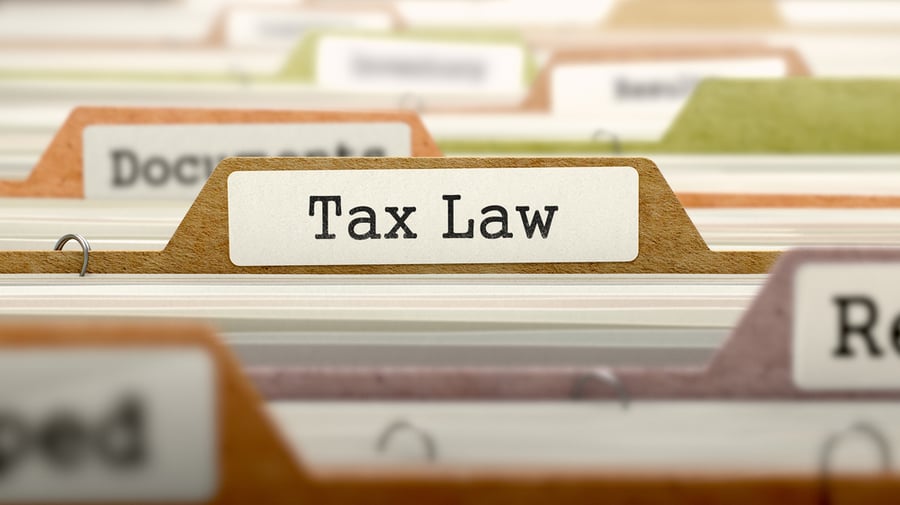Which PCS Move Expenses Are Tax Deductible?
Permanent Change of Station season is coming, with all the additional expenses of a military move. Thankfully, military allowances such as Dislocation Allowance, temporary lodging allowances, Mileage in Lieu of Transportation, and per diem will cover most of the costs you will incur.
But what if those allowances don’t cover all your expenses? A special section of the US tax law allows active duty military members who move on PCS orders to deduct unreimbursed moving expenses from their federal income taxes. But you can’t just deduct everything you spend during the move.
But first, a disclaimer: This information is provided for your education and is not tax advice. Use this information to guide your own learning, possibly with a qualified tax professional like an Enrolled Agent.
Who Is Eligible To Deduct Moving Expenses?
It used to be that everyone could deduct moving expenses. Not anymore. Now, only military members on PCS orders can deduct unreimbursed moving expenses. Military members do not have to meet the time or distance test to deduct these expenses. However, the move still needs to meet the “move closely related to the start of work” test.
How Do You Deduct Moving Expenses?
IRS Form 3903 lets you report and calculate your deductible moving expenses. It’s a remarkably simple form, but the instructions aren’t as clear as they could be. The deductible amount is then listed on Line 14 of Schedule 1 of the 1040 Income Tax Return.
This makes the deduction “above-the-line” or included before you get to the total tax section. Above-the-line deductions are more valuable than itemized deductions for two reasons. First, above-the-line deductions don’t require that you itemize deductions in order to benefit. Second, above-the-line deductions lower your Adjusted Gross Income (AGI), which affects eligibility for other credits and deductions, such as the Earned Income Credit and child tax credits. (For those of you wondering what “line” we’re talking about when we say “above-the-line” deductions, it’s the line that lists Adjusted Gross Income.)
 Image from Canva
Image from Canva
What Can You Deduct?
As with all tax deductions, there are very specific rules about what is, and is not, deductible. Jerry Zeigler, MBA, AFC®, EA, is the owner of JZ Financial Management+ and a member of the Better Financial Counseling Network. He explains,“It seems simple enough to deduct moving expenses, but I've seen a lot of mistakes by both DIY taxpayers and tax professionals. Just because it seems to be a perfectly reasonable moving expense doesn't mean it is a qualifying expense.”
You can only deduct expenses that the IRS deems to be “reasonable” and “necessary.”
You may deduct the unreimbursed portion of these expenses:
- Packing, crating, and transporting your household goods and personal effects
- Connecting or disconnecting utilities
- Shipping your car
- Transporting your household pets
- Moving your household goods and personal effects from a place other than your former home, up to the cost it would have been to ship those same items from your former home
- The cost of storing and insuring household goods and personal effects within any period of 30 consecutive days after the day your things are moved from your former home and before they are delivered to your new home
- Lodging expenses while traveling to your new home
- Car transportation expenses, using either actual expenses or the standard deduction
- Transportation expenses (other than car)
It’s important to account for the allowances you get from the military. There’s a space on the form to show the amounts you were paid, and they get deducted from your actual expenses. The amount will be shown on your W-2, in Box 12, with a Code P. If you did a Personally Procured Move, you will also need to download your “travel W-2” from MyPay.
 Image from Shutterstock
Image from Shutterstock
What Can’t You Deduct?
There are two main things that seem like you should be able to deduct them, but you can’t.
- You cannot deduct meals while traveling from your old home to your new home. You probably couldn’t deduct that anyway, because you receive per diem from the military for those days. But if your expenses exceed per diem, or your travel claim gets messed up, you still can’t deduct those meals.
- The temporary lodging deduction is limited to one day after you move out of your old house, the days of travel, and one day after you arrive at your new home. Once again, these days should be covered by either Temporary Lodging Allowance, Temporary Lodging Entitlement, or per diem.
Other things that specifically may not be deducted, regardless of why you moved or what situation caused the expense:
- The cost of lodging beyond your first night in your new location
- Vehicle registration fees or license plate costs
- Driver's license
- Costs of buying or selling a home (including closing costs, mortgage fees, and points)
- Costs of entering into or breaking a lease
- Loss on the sale of your home
- Mortgage penalties
- Real estate taxes
- Return trips to your former residence
- Security deposits (including any security deposit that was lost due to the move)
- Storage charges except those incurred in transit and for foreign moves
 Image from Shutterstock
Image from Shutterstock
The IRS Tools to Help
While it might seem hard to figure out what is and is not deductible, there are tools to help. Zeigler says, “I recommend not just answering the tax software questions, but also going through the Form 3903 instructions line by line.”
If you are not sure whether something can be deducted, the IRS provides a tool to help you determine which expenses are deductible. It doesn’t include everything you can imagine, but it is a great start if you’re not sure and hits on many common expenses.
If you have a military move that involves a lot of unreimbursed expenses, the moving expense deduction can help offset some of those costs. The rules are tricky, but the results are worth it!
Want more helpful information like this? Subscribe to our newsletter!





